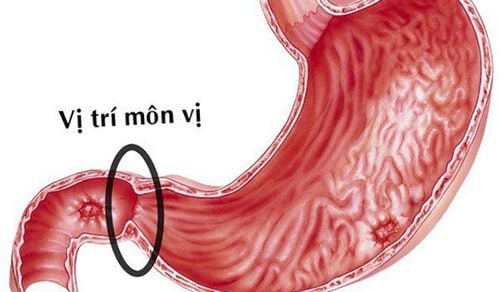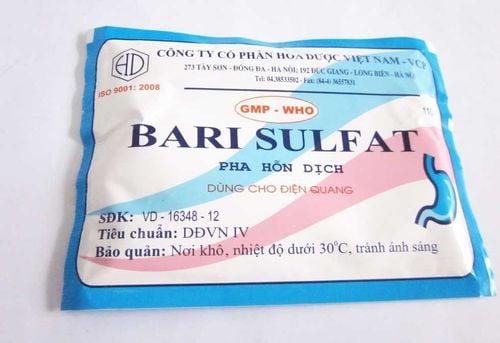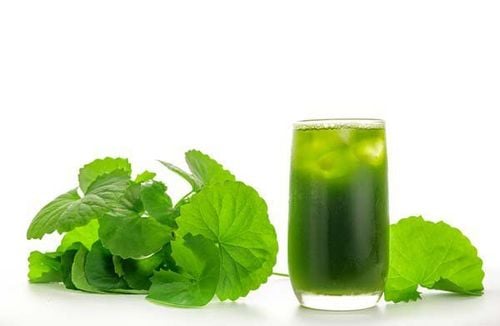This is an automatically translated article.
Post by Master, Doctor Mai Vien Phuong - Gastrointestinal Endoscopy - Department of Medical Examination & Internal Medicine - Vinmec Central Park International General Hospital.
Vomiting is usually no more harmful than other types of vomiting, but it can be a sign of more serious problems, especially in babies and children. If vomiting and severe abdominal pain, blood in vomit or stools persist for more than 24 hours, you should get medical help right away.
1. What is vomiting?
Vomiting is a type of violent vomiting in which stomach contents can be forcefully pushed away from you. It is usually short-lived, with more intense flare-ups than other types of vomiting. There is also a greater chance of vomiting suddenly without warning.
2. Causes of vomiting 2.1. Vomiting in infants and children Vomiting in infants and children has several causes as follows:
Pyloric stenosis Pyloric stenosis is a thickening of the muscle where the stomach empties into the small intestine. It usually causes symptoms within 3 to 5 weeks of birth, and it prevents food from moving from the stomach to the duodenum of the small intestine.
Pyloric stenosis requires surgery because malnutrition, dehydration and impaired growth will occur rapidly. Symptoms of pyloric stenosis include: Less and less bowel movements, no weight gain or loss, dehydration, and contractions in the baby's stomach after feeding.
Reflux Reflux is a condition in which stomach contents back up into the esophagus. In severe cases, acid reflux from the stomach irritates the esophagus and causes vomiting.
Other symptoms of gastroesophageal reflux in infants include: Vomiting of yellow or green liquid, difficulty breathing, refusal to eat.
Obstruction due to foreign body Foreign bodies of the stomach other than pyloric stenosis can also cause vomiting. For example, if your child swallows a small foreign body, it can cause the stomach to not be able to empty, which causes the stomach to contract very hard and cause vomiting.
Infection Infection, such as a virus, is a common cause of vomiting in children. Although most do not cause vomiting, it can. Stomach or intestinal infections in children have similar symptoms to adults, including diarrhea, fever, and abdominal cramps.
Overeating Eating too much can sometimes lead to vomiting as the stomach tries to push the food out.

In addition to vomiting, symptoms of a gastrointestinal infection may include abdominal pain, diarrhea, body aches, and fatigue.
Food poisoning Food poisoning can also cause vomiting. This is because your body is trying to get rid of toxins, such as bacteria that have contaminated food.
Obstruction Diseases that cause blockage in the stomach or intestines can cause vomiting. Obstructive conditions can be caused by intestinal volvulus (twisted bowel), intestinal adhesions, hernias, noncancerous tumors, and cancer.
Other symptoms of obstruction include bloating and pain, abdominal distension; constipation or diarrhea, depending on how much your bowel is blocked; decreased appetite
Overeating Eating too much can lead to vomiting in adults, as the stomach tries to push the food out and it has no room.
Vomiting is usually harmless, but you should call your doctor if you have severe abdominal pain, blood in your vomit or stools, or vomiting that lasts more than 24 hours.
3. Vomiting Complications The main potential complication of vomiting is dehydration. You can treat or prevent dehydration by drinking water or a sports drink as soon as you can control vomiting. You can also try sucking on shaved ice, that helps you stay hydrated while controlling how much liquid you're ingesting.
Chronic vomiting can also lead to malnutrition and weight loss because your body is expelling food instead of digesting and absorbing nutrients from it. Refeeding bland foods after vomiting can help with food retention and avoid these complications.

After the vomiting stops, you can do things to take care of yourself. Vomiting can make you dehydrated, so it's important to drink fluids or fluids with electrolytes.
When you can stay hydrated, you should also try to eat. You should start with small amounts of bland foods, such as dry toast, bananas, broth, rice, apple sauce, or crackers. Once you can eat bland solids, try to return to a fully balanced diet as soon as possible.
In infants, the treatment for vomiting depends on the cause. If pyloric stenosis causes regurgitation, surgery is needed to widen the pylorus and allow food to pass out of the stomach into the normal small intestine. If GERD is causing your child's vomiting, it may help to feed your child more often and with less food at a time. Frequent burping and making sure your baby is lying flat for 30 minutes after feeding can also help reduce reflux. Vomiting caused by a bacterial infection may require antibiotics or it may just take time to clear up.
Vomiting is usually no more harmful than other types of vomiting, but it can be a sign of more serious problems, especially in babies and children. If you experience vomiting and severe abdominal pain, blood in your vomit or stools, and persist for more than 24 hours, you should get medical help right away.
Please dial HOTLINE for more information or register for an appointment HERE. Download MyVinmec app to make appointments faster and to manage your bookings easily.
References:Consolini DM. (2016). Nausea and vomiting in Children and children. merckmanuals.com/professional/pediatrics/symptoms-in-infants-and-children/nausea-and-vomiting-in-infants-and-children Intestinal obstruction. (n.d.). medlineplus.gov/intestinaobstruction.html Greenberger NJ. (2016). Nausea and vomiting. merckmanuals.com/professional/gastrointestinal-disorders/symptoms-of-gi-disorders/nausea-and-vomiting Mallory-Weiss syndrome. (n.d.). cedars-sinai.edu/Patients/Health-Conditions/Mallory-Weiss-Syndrome.aspx Mayo Clinic Staff. (2017). Infant reflux: Symptoms. mayoclinic.org/diseases-conditions/infant-acid-reflux/symptoms-causes/dxc-20157641 Pyloric stenosis. (2017). kidshealth.org/en/parents/pyloric-stenosis.html














